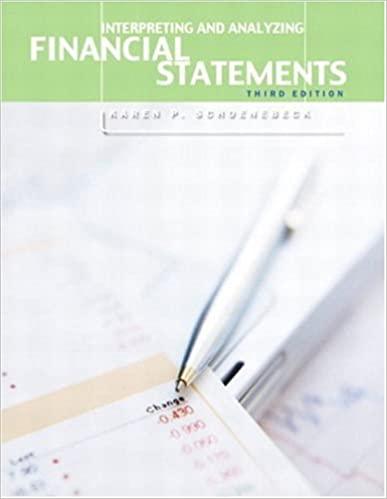Question
The Mixing Department combines the direct materials of paraffin wax and pigments. The heated mixture is pumped to the Molding? Department, where it is poured
The Mixing Department combines the direct materials of paraffin wax and pigments. The heated mixture is pumped to the Molding? Department, where it is poured into molds. After the molds? cool, the crayons are removed from the molds and are transferred to the Packaging? Department, where paper wrappers are added and the crayons are boxed.
In the Mixing? Department, the direct materials are added at the beginning of the process and the conversion costs are incurred evenly throughout the process. Work in process of the Mixing Department on March ?1, 2018?, consisted of 200 batches of crayons that were 30% of the way through the production process. The beginning balance in? Work-in-Process Inventorylong dashMixing was $32,900?, which consisted of $13,000 in direct materials costs and $19,900 in conversion costs. During March?, 4,800 batches were started in production. The Mixing Department transferred 4,400 batches to the Molding Department in March?, and 600 were still in process on March 31. This ending inventory was 60% of the way through the mixing process. Colorway uses FIFO process costing.
Work-in-Process InventoryMixing
Balance, Mar. 1
32,900
Direct materials
28,800
Direct labor
29,550
Manufacturing overhead
26,850
Requirement 1. Prepare a production cost report for the Mixing Department for
MarchMarch.
Round equivalent unit of production costs to four decimal places. Round all other costs to the nearest whole dollar. ?(Complete all answer boxes. Enter a? "0" for any zero balances. Round cost per unit amounts to four decimal places. Abbreviations? used: EUP? = equivalent units of? production; WIP? = work-in-process.)
| Colorway | ||||||
| Production Cost Report - Mixing Department | ||||||
| Month Ended March 31 | ||||||
|
|
| Equivalent Units |
|
| ||
|
| Physical | Direct | Conversion |
|
| |
| UNITS | Units | Materials | Costs |
|
| |
| Units to account for: |
|
|
|
|
| |
|
|
|
|
|
|
| |
|
|
|
|
|
|
| |
| Total units to account for |
|
|
|
|
| |
|
|
|
|
|
|
| |
| Units accounted for: |
|
|
|
|
| |
|
|
|
|
|
|
| |
|
|
|
|
|
|
| |
| Transferred to Molding Department |
|
|
|
|
| |
|
|
|
|
|
|
| |
| Total units accounted for |
|
|
|
|
| |
|
|
|
|
|
|
|
|
|
| Direct | Conversion | Total | Cost |
| COSTS |
| Materials | Costs | Costs | per Unit |
| Costs to account for: |
|
|
|
|
|
|
|
|
|
|
| |
|
|
|
|
|
| |
| Total costs to account for |
|
|
|
|
|
|
|
|
|
|
|
|
|
|
|
|
|
| |
|
|
|
|
|
| |
| Cost per equivalent unit |
|
|
|
|
|
| Costs accounted for: |
|
|
|
|
|
|
|
|
|
|
|
|
|
|
|
|
| Total costs for beginning WIP |
|
|
|
|
|
|
|
|
|
|
| Transferred to Mixing Department |
|
|
|
|
|
|
|
|
|
|
| Total costs accounted for |
|
|
|
|
Requirement 2. Journalize all transactions affecting the Mixing Department during
MarchMarch?,
including the entries that have already been posted. Assume labor costs are accrued and not yet paid.
Begin with a summary journal entry to record the assignment of direct materials and direct labor? costs, and the allocation of manufacturing overhead to the Mixing Department. ?(Prepare a single compound journal entry. Record debits? first, then credits. Exclude explanations from journal? entries.)
| Date | Accounts | Debit | Credit | |
| Mar. | 31 |
|
|
|
|
|
|
|
|
|
|
|
|
|
|
|
|
|
|
|
|
|
|
|
|
|
|
|
Prepare the journal entry to record the cost of the units? (crayons) completed and transferred out of the Mixing Department.
| Date | Accounts | Debit | Credit | |
| Mar. | 31 |
|
|
|
|
|
|
|
|
|
|
|
|
|
|
|
|
|
|
|
|
|
Step by Step Solution
There are 3 Steps involved in it
Step: 1

Get Instant Access to Expert-Tailored Solutions
See step-by-step solutions with expert insights and AI powered tools for academic success
Step: 2

Step: 3

Ace Your Homework with AI
Get the answers you need in no time with our AI-driven, step-by-step assistance
Get Started


